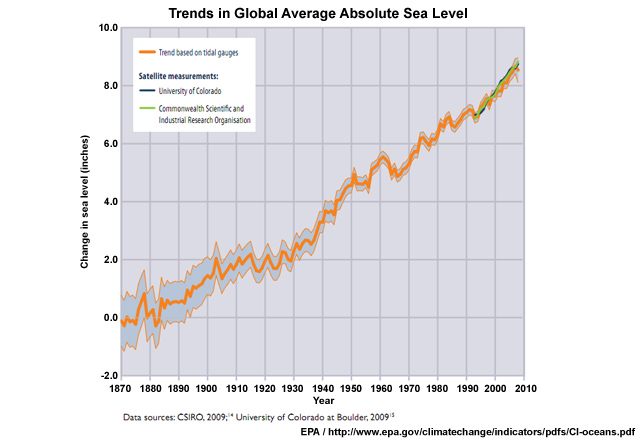Oceans
Ships, buoys, and satellites that dot the globe tell us the oceans are heating up too. The top 1,000 feet (300 meters) or so of the ocean have warmed by 0.5°F (0.3°C) over the past 50 years. The deep sea, too, has warmed. A NOAA study that looked at the period from 1948 to 1998 found that every ocean warmed to at least 3,300 feet (1,006 m).

And as air and oceans warm, the seas have risen. All together, the IPCC estimates the oceans rose 4 to 10 inches (10-25 cm) in the 20th century from melting ice and snow and the physical expansion of warmer water. The average rate of increase has been 0.06 in. (0.15 cm) per year from 1870 to 2008. From 1993 to 2008, average sea level rose roughly twice as fast as the long-term trend, at a rate of about 0.12 in. (0.30) per year.
Sea levels aren't the only way oceans change. Seawater, which is normally alkaline, is becoming less so as extra CO2 in the air is absorbed. When the gas dissolves in the ocean, it reacts with carbonate ions to form carbonic acid. As a result, the oceans are now 30% less alkaline than they were just 100 or so years ago.
Though that doesn't sound like a big deal, it means times will be much harder for ocean creatures like coral, plankton, and shellfish that depend on abundant carbonate ions as raw material for shell-building. If populations of these organisms plummet, the fish that eat them and the millions of people that eat the fish will suffer as well.